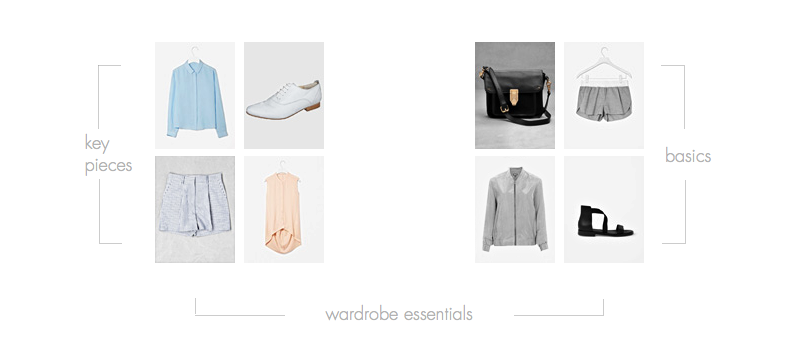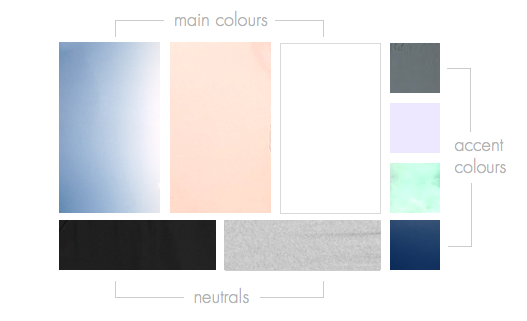Wardrobe Essentials: How to build a solid foundation of basics
I've recently noticed that I get quite a lot of questions revolving around the general topic of Wardrobe Essentials. “What are the most important pieces in a woman’s wardrobe?” or “I’m rebuilding my wardrobe, which items should I get first?”, for example. Wardrobe Essentials is also one of the top keywords that send people to my blog, even though I haven’t actually written a corresponding post. It seems that many people would really like to have a blueprint that they can either adopt or at least use as a starting point to curate their own wardrobe. Now, if from the title you were expecting a traditional ’10 universal wardrobe essentials’ list complete with classic black heels, a ‘crisp’ white shirt and dark-wash jeans, I have to disappoint you: in my opinion it’s just not that simple. Sure, those lists may work for some people with a certain style, but for others they are just not applicable. Even if you have a relatively classic style, similar to the one those lists presume, the individual pieces you use to interpret that style will depend on your colour palette, lifestyle and body shape. And, more importantly, your wardrobe essentials should be 100% in tune with how you structure your wardrobe and the methods you use to build outfits, so copy-and-pasting the wardrobe essentials of someone else really won’t do your personal style any favours.
Even though I don’t believe in universal ‘must-haves’ I do think the general concept of wardrobe essentials (i.e. a small core set of pieces that form the foundation of your entire style) can be beneficial. Specifically, figuring out your own wardrobe essentials can help you in two ways:
- Trying to condense your aesthetic and functional wardrobe needs into a small set forces you to be super clear about your style and the structure of your wardrobe.
- It will help you set priorities: Once you know your wardrobe essentials you can focus on curating them first and thereby make the greatest marginal difference to your wardrobe.
Your own perfect set of essentials derives from your unique personal style and the structure of your wardrobe, so to follow the formula below you will need to already have a pretty good idea of two aspects of your style: your colour palette and your favourite proportions (a certain combination of items, e.g. a uniform). If you are not sure what I’m talking about, check out this post for a step-by-step guide on how to create a colour scheme for your wardrobe and this post, for more info on structuring your wardrobe and proportions.
First of all, let’s define the term Wardrobe Essentials. In the magazine/blog world of fashion, you’ll often find it used to describe a ton of different concepts, from little things like tights and layering tops to items like ‘diamond studs’ that are deemed ‘a must-have in every woman’s wardrobe". In my books, the two main characteristics of wardrobe essentials are both their aesthetic and functional significance or, in other words, wardrobe essentials are the items in your closet that best convey your personal style and are an important component of many of your outfits. In fact, I think there are two distinct classes of wardrobe essentials, ‘basics’ and ‘key pieces’, that serve different functions within your wardrobe, but deserve an equal amount of attention:
Key pieces and basics are the structural equivalents of the main colours and neutrals in a colour palette like the one below, i.e. key pieces and main colours are the building blocks of your wardrobe, while basics and neutrals are the glue that hold everything together. As a general guide, it is a good idea to let your colour palette determine the colours of your wardrobe essentials, i.e. choose key pieces in main colours and basics in neutrals. Of course, your 3-4 main colours should not exclusively be reserved for your key pieces, but in order to best represent your colour scheme (and your style), your key pieces should feature mostly your main colours. The same goes for basics: not all of your items in neutral shades have to be basics, but most of your basics should ideally be in one of your chosen neutrals. So for example, if I was building a wardrobe around the colour palette below, I would choose key pieces in a soft blue, white and a rosy nude shade, and basics in grey and black.
Every other characteristic of your key pieces and basics, i.e. the right shape, cut and texture, depends on the structure of your wardrobe. Even if you haven’t actively refined the internal structure of your wardrobe, it is likely already in tune with how you build outfits. The easiest way to become aware of the structure of your wardrobe is to look at your main proportions. A proportion is just what I call a certain combination of item categories, e.g. skinny jeans + lightweight coat + t-shirt + heels or maxi dress + leather sandals + cropped jacket. For a more detailed explanation of the concept of proportions and how to use them to build a capsule wardrobe you can check out this post, but for now all you need to do is pick your two most worn proportions or, if you are trying to revamp your wardrobe, two proportions that you would ideally wear most often. If you already have a signature look or uniform, use that as your first proportion and select one more for added variety. Depending on how many items your proportions consist of and whether there is any overlap between the two, two proportions will give you about 5 - 9 item categories to focus on in the next step.
Of course, your wardrobe will consist of more than just your basics and key pieces, but in my opinion it's a good idea to start your curating process by making sure you have a small set of flagship items (key pieces) and also a few neutrals to support any outfit idea you might have. My wardrobe essentials and in particular my key pieces are the first things I think about when creating a capsule wardrobe because they help me envision what I want my look to be for the season. Just like your wardrobe, your list of essentials will need to be updated about twice a year, not just because you have to adjust your proportions to the weather but also because your colour palette might change. For example, black is a neutral for me during the summer season and I wear it mainly as basics with my main colours (like in this outfit), but during the fall/winter black is always one of my main colours. I am currently in the process of curating my summer key pieces: Supergas, sandals, lots of shorts/culottes and a couple of lightweight tank tops and t-shirts.





